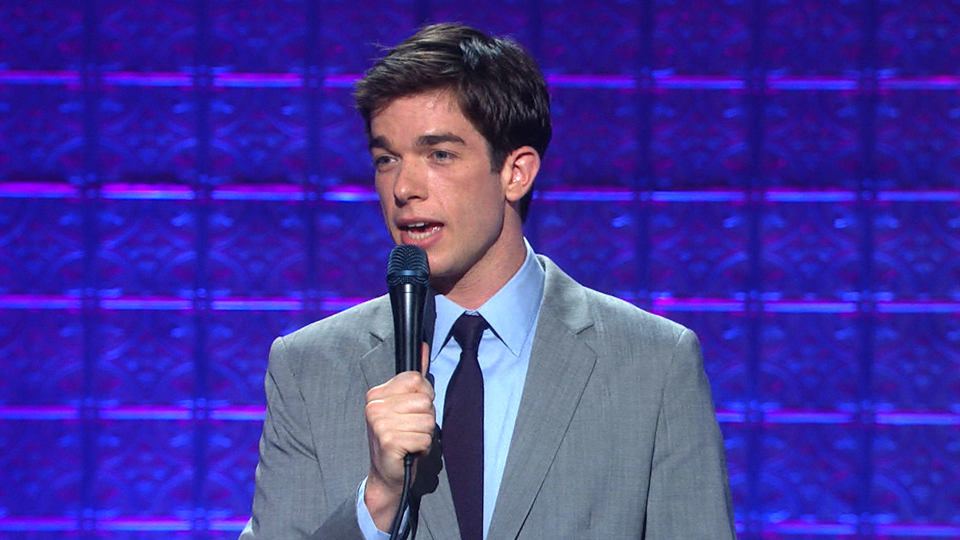I think we’ve all experienced firsthand how subjective comedy can be. For example, maybe you once whipped out your phone to show someone a viral video, sure that your friend would find a giggling baby or Andy Samberg’s musical stylings just as hilarious as you do. But then came that uncomfortable moment when you looked over at your friend mid-chortle and were met with only a tight smile in return. At this point, it was too late to go back. You were a solid 90 seconds in, and yet to hear so much as an appreciative scoff from this person you thought you knew so well. (If your friend is less polite, they might have already told you the video was dumb or simply wandered off in boredom.) The video ended, your laughter faded, and you were left with only silence. Maybe you decided your friend just didn’t get it, and tried to explain why the video was funny. Or maybe you wisely just tucked your phone away, eager to forget the slightly painful, joyless three minutes you just experienced.
Your reaction wasn’t wrong, and neither was your friend’s. While media like film and music are often judged as somewhat objectively “bad” or “good”, comedy is one of the few forms of entertainment that is, for the most part, simply allowed to exist, leaving it to the viewer to decide whether or not they enjoy it. Any semi-polished stand-up comic can divide a crowd and inspire lively debate about their funniness.
This democratic approach to comedy is a major element of Toronto’s JFL42 festival. As an offshoot of the larger Montreal Just for Laughs festival, JFL42 brings together 42 “things”, as they call them, for its passholders to experience over 10 days. From free coffee to headlining comedy galas at the Sony Centre, these things vary in ambition and comedic payoff, and it’s unlikely that anyone would enjoy all of them. But using the flat-rate pass system allows festivalgoers to experience as much or as little as they want, and it encourages them to try things outside of their comfort zone.
That said, the execution of JFL42’s pass system is flawed. The pass runs entirely from your smartphone (unless you print out the necessary barcode to get into each event), and the convoluted system of virtual credits and required online check-ins is more of a headache than a convenience. But the clunky system does allow potentially unlimited access to events, which is an impressive bargain if you make good use of it.
Perhaps the biggest draw of JFL42 is the variety of its events. This year’s festival included heavyweight headliners Sarah Silverman and Aziz Ansari, buzzed-about up-and-comers like Anthony Jeselnik and Maria Bamford, established names like Bill Burr and Janeane Garofalo, and relatively new faces like Ivan Decker and Jerrod Carmichael. The venues are scattered around Toronto and include a mixture of proper theatres and comedy clubs—sometimes makeshift ones. (On a side note, there is also axe-throwing. Whence the variety.)
As subjective as comedy may be, I have a hard time imagining anyone having too unpleasant of a time at John Mulaney’s unwaveringly likeable hour-long set, which was the highlight of the festival for me. On the first of his two nights at the spacious Queen Elizabeth Theatre, the venue was less than two-thirds full. Yet Mulaney’s unassuming charm seemed to win the crowd over almost immediately. Following high-energy opener Sean Patton, Mulaney launched into a jam-packed hour of meditations on Back to the Future, his strict Catholic upbringing, New York’s bizarre residents (a familiar theme from Mulaney’s 2011 comedy special “New in Town”), and much more.
Mulaney cut his teeth writing for Saturday Night Live, and perhaps his biggest claim to fame on the show is creating the popular “Weekend Update” character Stefon with actor Bill Hader.
However, his standup routine feels far more focused than most of SNL’s recent material. Although he has a conversational delivery style, Mulaney’s actual jokes are very precise. This was perhaps best demonstrated in his lengthy story about his parents’ unlikely personal connection to Bill Clinton, which closed his set. Mulaney paced himself, throwing in little details about his mother’s growing and barely concealed infatuation and his father’s unwarranted vendetta against Clinton perfectly, resulting in an understated and hilarious payoff.
Everything about Mulaney’s set felt purposeful. His callbacks to previous jokes were slipped in so casually that you might miss them, and his devotion largely to “clean” humour gave his few F-bombs and crude diversions all the more comedic impact. Even his shorter anecdotes about an ill-fated childhood trip to McDonald’s and the recent hacking of his email account drew big laughs from the appreciative crowd.
Mulaney’s good-natured set is just one side of JFL42. And while it feels like a comedy festival that is still finding its footing, JFL42’s innovative take on the festival experience has its benefits. The sheer volume of performers can entice a variety of visitors with differing opinions on what is and isn’t funny and will no doubt spark plenty of discussion and debate during the ride home.



